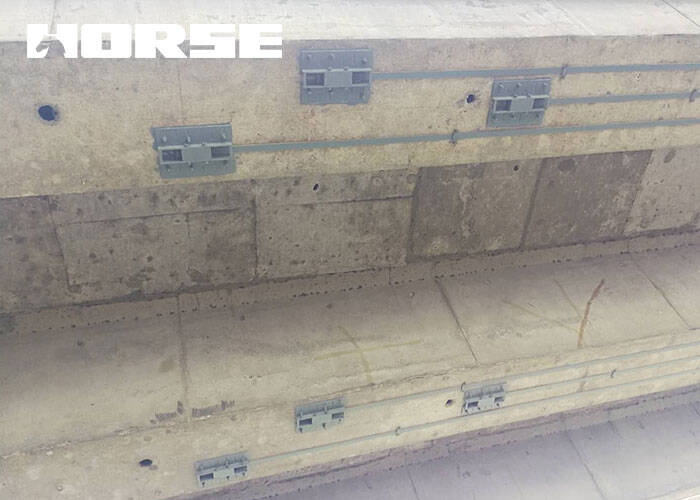Reinforce Small And Medium-span Bridges
Prestressed Carbon Fiber Plate Strengthening
According to the disease characteristics of the bridge, after comparison of various technical schemes and expert argumentation, the position of the hollow slab of this bridge engineering project is reinforced with prestressed carbon fiber plate. The reinforcement construction method is mainly to paste three pre-stressed carbon fiber plates with a width of 100mm and a thickness of 1.4mm on each hollow slab T-beam structure.

Project Overview
The Wuxi Middle Bridge is located in the Zhangping section of Provincial Highway 208. The bridge was completed in 2004. The bridge center pile number is K54+703. The bridge crosses the Shuangyang River about 200m upstream of the old bridge in Wuxi Village. There are rural roads along both banks. The Zhangpingan Village Road crosses the main line in plane, and the Yongan Bank main line crosses the village road, with a clear height of 3.5m under the bridge at the crossing. The total length of the bridge is 90m, and the first hole is located in the transition curve. The design load is car-20, trailer-100, and the design flood frequency is 1/100. The current bridge deck width is a linear bridge (net -8.0+2×0.5) m sidewalk with a total width of 9.0m. The first hole curve widens the gradual change section, the width of K54+660 is (net-8.66+2×0.5) m sidewalk, and the total width is 9.66m. The upper structure is a 5×16m reinforced concrete hollow slab, and the bridge deck is continuous. The substructure bridge piers are reinforced concrete double-column piers, bored piles, platform #0 is the pile foundation connecting cap beam, platform #5 is the gravity U-shaped abutment.
Major diseases of bridges
According to the relevant inspection report, a large number of transverse cracks are evenly distributed at the bottom of the beam structure of the main load-bearing member of the superstructure. Although the width of the cracks is less than the allowable parameter value of the specification, due to the relatively large number of cracks, if they are not dealt with in time, it is easy to cause the durability of the bridge structure to decrease. On the other hand, the crack problem is a manifestation of the mechanical performance of the project characterization structure of the bridge engineering. If the bridge has a large number of lateral cracks, it means that the flexural bearing capacity of the bridge structure has decreased.
The main reason for the transverse cracks of the bridge is that the superstructure of the bridge is under long-term vehicle load, especially under the rolling action of some overweight vehicles, the bottom of the beam structure has a relatively obvious bending phenomenon, forming a larger tensile stress. Deflection occurs at the mid-span position of the bridge because the actual tensile strength of concrete is relatively low. When the bottom of the bridge slab is severely bent and under the conditions of greater tensile stress, it is easy to pass the ultimate tensile strength of the bridge, and then more serious bending cracks will occur at the mid-span position of the bridge. The development direction of these bending cracks is basically perpendicular to the axial direction, distributed in the vicinity of the mid-span, with a spacing ranging from 10 to 20 cm, and the overall length can penetrate the full plate or the sub-slab position of the bridge T-beam structure. The transverse cracks of the hollow slab have the characteristics of being wide in the middle and narrow on both sides, while the transverse cracks of the T-beam show a structural form of width at the bottom and narrow at the top.
Maintenance and reinforcement plan
According to the disease characteristics of the bridge, after comparison of various technical schemes and expert argumentation, the position of the hollow slab of this bridge engineering project is reinforced with prestressed carbon fiber plate. The reinforcement construction method is mainly to paste three pre-stressed carbon fiber plates with a width of 100mm and a thickness of 1.4mm on each hollow slab T-beam structure.
In summary, through practical work analysis, it can be concluded that the use of carbon fiber plate reinforcement construction technology is the most obvious in the overall reinforcement application effect, and it has received extensive attention and attention from major engineering construction units. It is necessary to comprehensively control the key points of the application of carbon fiber plate reinforcement construction technology to improve the quality and effect of bridge reinforcement construction.